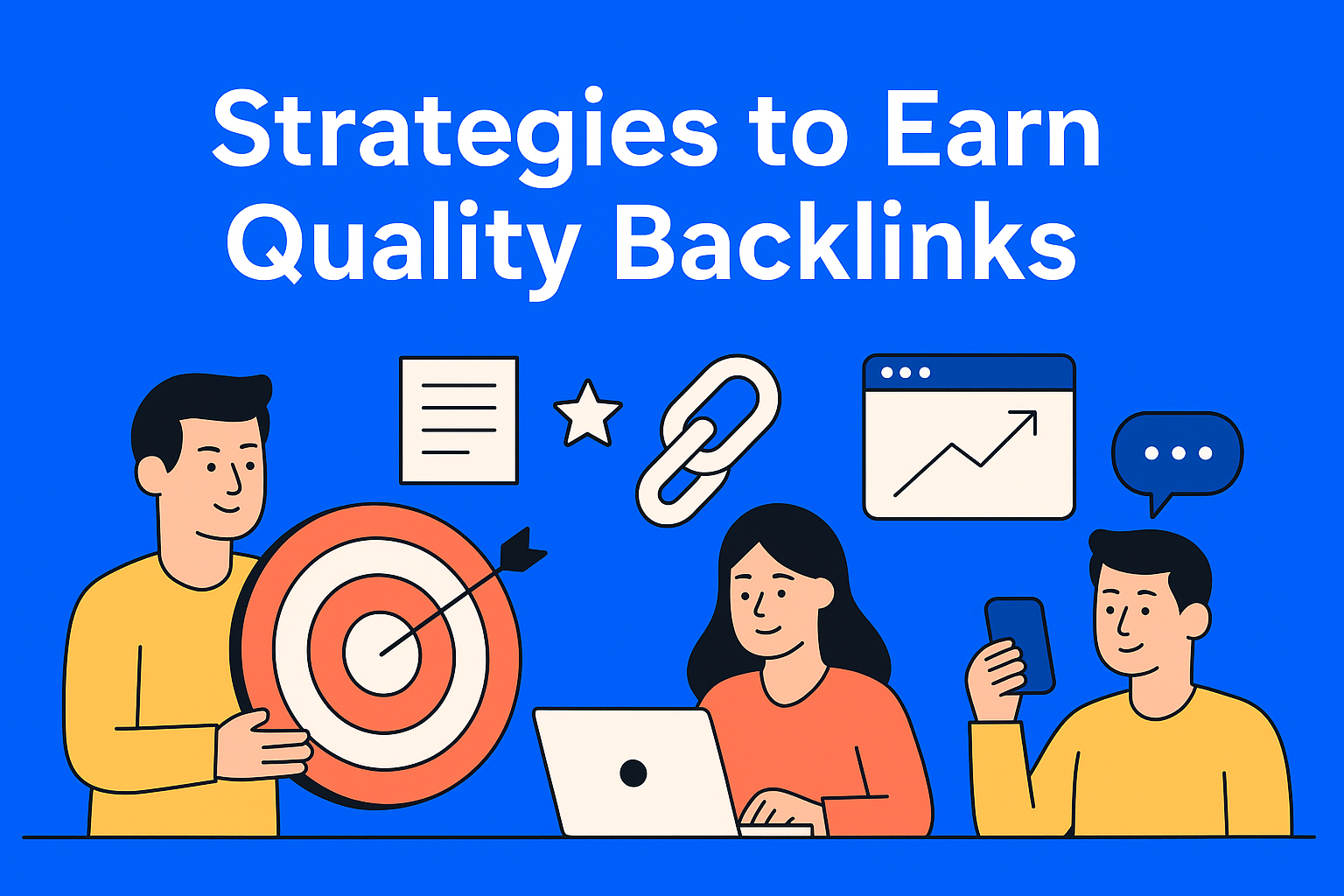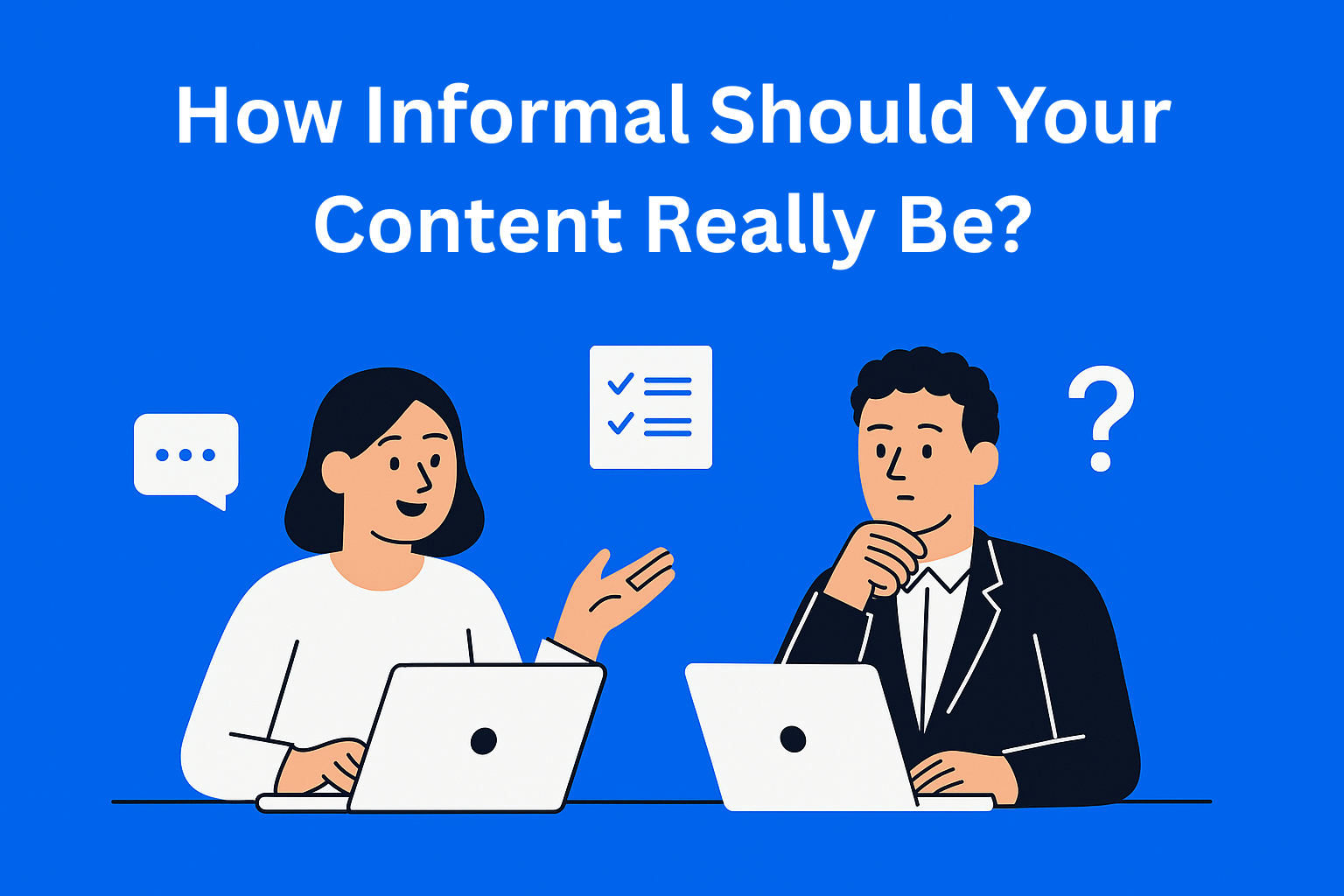Link Building for Content: Strategies to Earn Quality Backlinks
Learn how to build quality backlinks through simple, effective strategies. Discover how great content, outreach, and smart SEO can naturally grow your website’s authority and boost search rankings

If you’ve ever heard of SEO, you’ve probably come across the term link building. In short, it’s the process of getting links from other websites that lead to yours. These links are called backlinks, and they’re one of the most important factors that determine how high your website appears in Google search results.
Think of a backlink as a vote of confidence. When another website links to yours, it’s like saying, “This content is useful and worth checking out.” More of these votes (quality links) mean more authority in Google’s eyes. But it’s important to note that not every link is a good link. Quantity doesn’t equal quality. The goal isn’t to have hundreds of links from random sites, but rather a few strong, relevant links from trusted sources.
In this blog, you’ll learn exactly what link building means, how to create content that naturally attracts links, and which strategies are most effective for earning quality backlinks.
Key Takeaways
- Backlinks = trust signals - High-quality links from relevant sites act as votes of confidence and boost your SEO authority.
- Create link-worthy content - Original research, infographics, expert quotes, and evergreen guides are most likely to earn organic backlinks.
- Outreach with value, not spam - Personalized outreach, guest posting, and fixing broken links work best when focused on building relationships.
- Track your efforts with smart tools - Use Ahrefs, Moz, or SEMrush to monitor backlink growth, domain authority, and referring domains.
- Focus on quality, not shortcuts - Avoid buying links or shady practices. Ethical link building builds lasting visibility and trust.
Understanding Link Building in the Context of Content
Link building isn’t just a technical SEO tactic - it’s part of a bigger strategy of creating valuable content. If you make content that people genuinely want to share, links will come naturally. But to achieve that, you need to understand what makes link-worthy content.
That’s content that provides value: useful information, a problem solved, a fresh perspective, or a helpful tool. For example, guides, original research, infographics, or practical tools are the types of content that naturally attract links.
Google can easily spot the difference between links you’ve earned naturally because your content is useful, and those you’ve bought or artificially placed. If you try to buy links from unreliable websites, Google sees that as cheating. In that case, your site could be penalized - pushed down in search results or even removed completely.
In other words: real link building for content isn’t about tricking the system - it’s the result of hard work and quality writing.
Types of Content That Attract the Most Backlinks
To earn backlinks, you first need to create content that deserves them. Here are a few types that usually attract high-quality backlinks:
Original Research and Case Studies
People love data. If you conduct your own research or analyze trends in your industry, others will link to your site as a source. For example: “Based on a survey of 500 SEO experts, 67% believe that natural links are the most valuable.”
Infographics and Visual Guides
These are images that present information in a simple and engaging way. For example, if you have a lot of data that’s hard to explain with text, you can visualize it with charts, colors, and symbols. People understand and remember such information more easily, so they often share it on social media or their own sites. When others use your infographic, they usually add a link to your website as the source.
Ultimate Guides (Long, Detailed Articles)
These are articles that cover an entire topic from start to finish. For instance, if you write a guide about how to start a blog, it should include everything - from choosing a platform to promoting the content. Such articles are helpful and often used as a reference, so other sites love linking to them.
Interviews and Expert Quotes
When you talk to experienced professionals in your field and include their advice or opinions in your content, it increases your article’s value. Those experts often share the interview or article on their own profiles or websites, bringing more visits and links back to your site.
Strategies for Earning Quality Backlinks
Now that you know what types of content work best, let’s go through some concrete link building strategies.
a) Outreach and Relationship Building
Outreach means reaching out directly to bloggers, journalists, or website owners and showing them your content. The goal isn’t just to get a link - it’s to build relationships. When you contact them, don’t send generic messages. Write something short, personal, and explain why your article could be useful for their audience.
b) Guest Posting
Guest posting is when you write a blog post for another website. In return, you get a link to your site - usually in your bio or inside the text. The key is to write for sites that are relevant to your niche. For example, if you write about marketing, you wouldn’t send an article about recipes.
c) Broken Link Building
This technique involves finding broken links (links that lead to pages that no longer exist) on other websites. Then, you contact the site owner and suggest your content as a replacement. It’s a win-win situation: they fix their broken link, and you get a backlink. Keep in mind, though, that this method takes a bit more time.
d) Digital PR and Trends
Digital PR combines public relations and link building. It means using interesting stories, campaigns, or projects to attract media and website attention. For example, imagine you run a company that sells eco-friendly products and you start a campaign called “100 Trees for Our City.” When local media and blogs write about your campaign and mention your website as a source, you get valuable media backlinks. These links not only increase brand visibility but also boost your SEO because they come from trustworthy and relevant sources.
e) Linkable Assets and Evergreen Content
Create content that doesn’t become outdated - meaning it stays useful over time. For example, if you make a beginner’s guide to digital marketing, it will still be valuable next year because the basics rarely change. Or, if you build a simple online calculator that helps people estimate ad costs, users will keep visiting and sharing it. We call this type of content evergreen because, like an evergreen tree, it stays fresh and valuable year-round. People will keep using and sharing it, which means it will continuously bring you new links and visitors.
Tracking and Measuring Link Building Success
Once you start your link building efforts, it’s important to track your results. Without tracking, you can’t know what’s working and what isn’t.
Use tools like Ahrefs, Moz, or SEMrush. They show you how many backlinks you have, where they come from, and how strong they are. Pay attention to these metrics:
- Domain Authority (DA): Shows the authority of the site linking to you.
- Referring Domains: Indicates how many different websites link to you. More unique domains are better than many links from the same one.
- Link Velocity: The speed at which you’re gaining links. If it increases too quickly, Google might suspect you’re buying links.
Tracking helps you understand which content attracts the most backlinks and where to focus your efforts in the future.
Ethics and Long-Term Strategy
In the SEO world, there’s a big difference between white-hat and black-hat tactics. White-hat methods are honest and sustainable (like natural link building), while black-hat methods are short-term and risky (like buying links or automated spam).
Google quickly detects unnatural links and can penalize your site, making you lose your rankings. That’s why it’s always better to focus on quality content, relationship building, and trust. In the long run, ethical link building brings stable traffic growth and a solid reputation.
Conclusion
Link building isn’t just an SEO trick - it’s a process of building reputation. When you focus on providing value and building real relationships within your industry, links come naturally. Instead of chasing quick results, grow steadily and wisely.
If you already have content on your website, start there. Review it to see if you can explain or update something better. Then, share it with people who might find it useful, such as bloggers or owners of similar websites. It’s a simple and natural way to earn good backlinks to your site.






